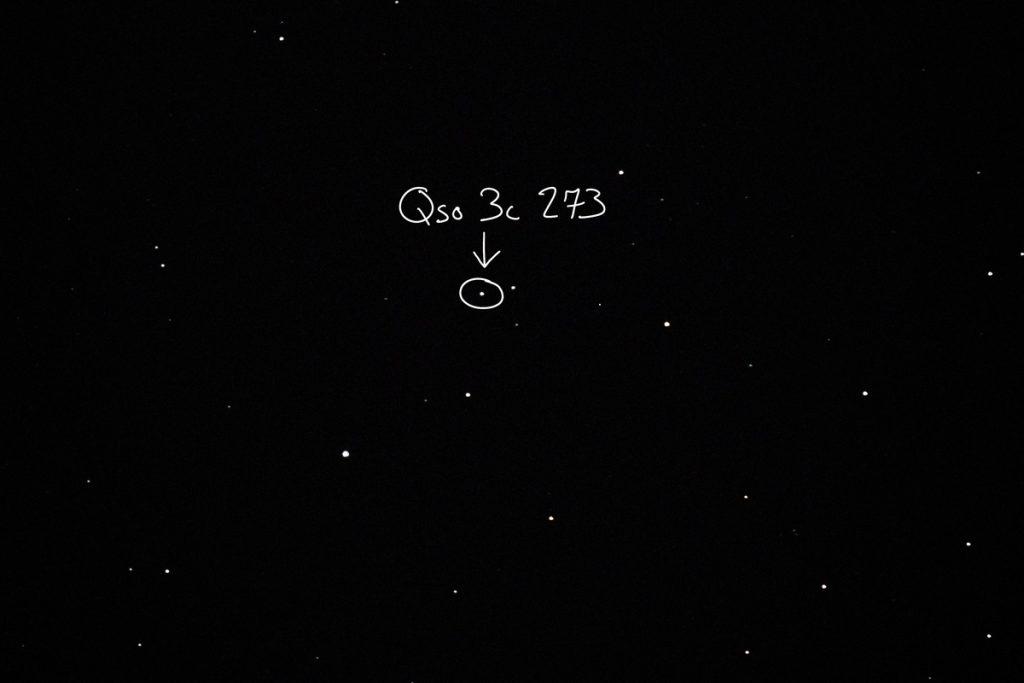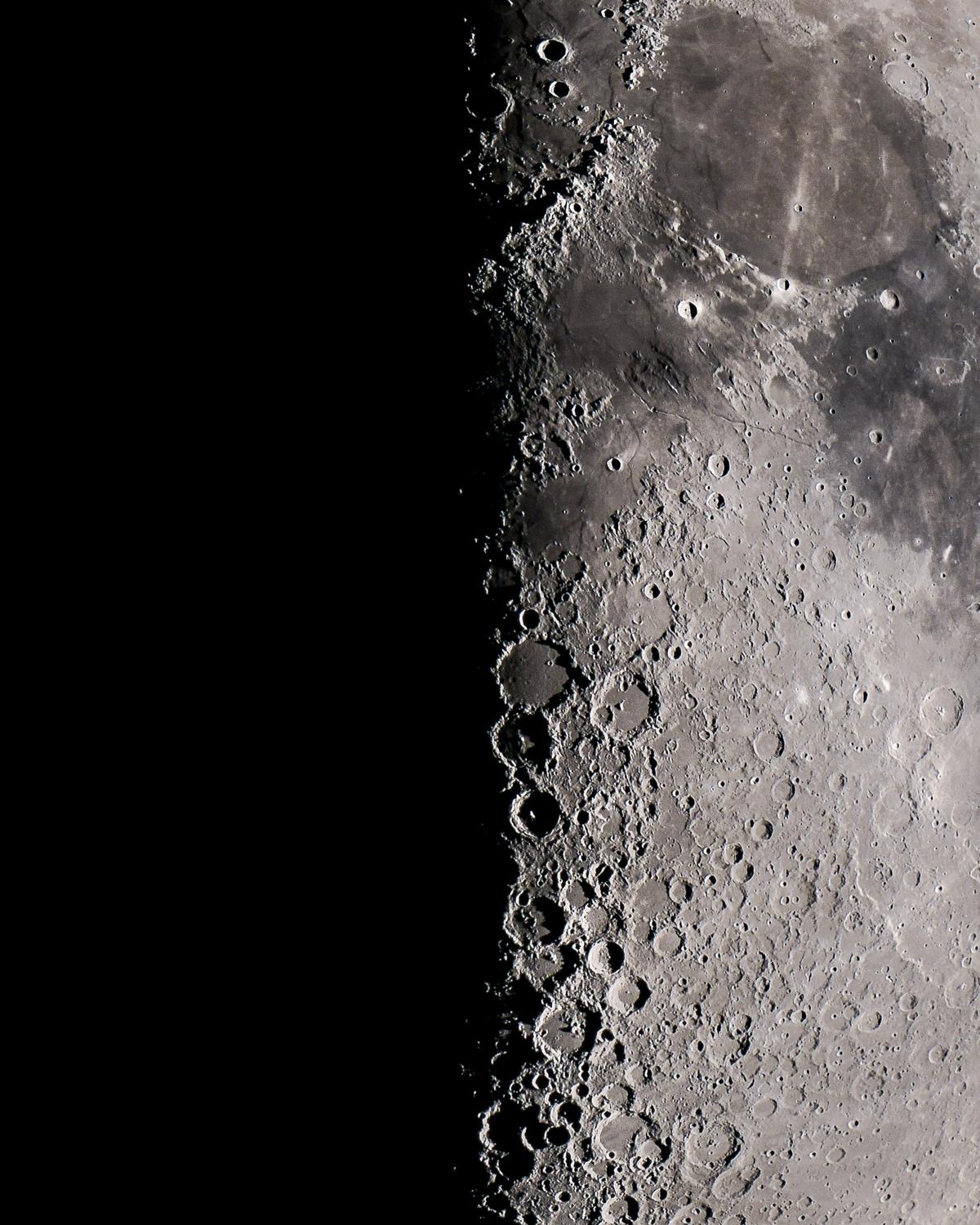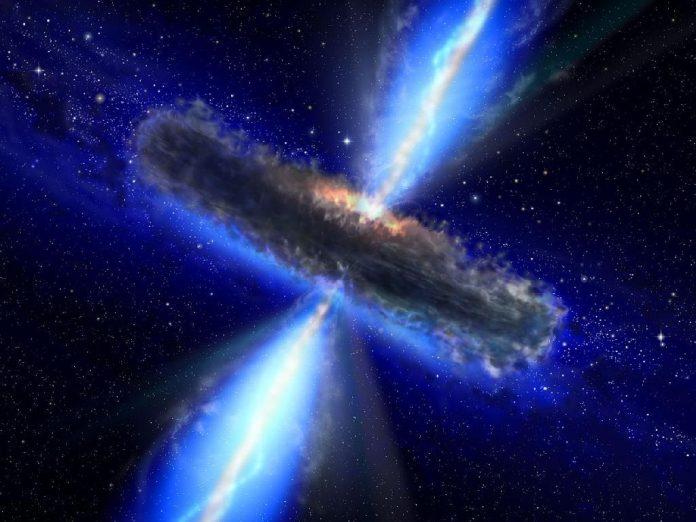
This photograph may look like nothing more than an insignificant smattering of stars in a rather unimportant part of our night sky. They don’t make a constellation and none of these stars have fancy names. But one, the minuscule white dot labeled QSO 3C 273, is the fascinating destination of our mind-bending voyage in this month’s “The Cosmic Mariner.”
Time, as we know it on Earth, is often considered a nuisance. Alarms wake us. We snooze them. They wake us once more. We view time as an infinite one-way street; unfaltering in its course. The concept of traveling the space-time continuum only a plot device in fiction. Or is it?
Let’s begin our voyage with a walk outside. Look up, it’s the moon! “Wow,” you say, staring at it for the 1,000th time. But this is different. Remember that “wow” you just exhaled? That’s roughly the same amount of time it took for light to travel from the Moon to your eye. Approximately one second. Now, pause and reflect on that assessment. Did you perceive it? Congratulations! You’ve just time traveled! That’s right! You just viewed the moon one second in the past!

telescope in Enid, Oklahoma. Photo by Patrick Wine.
At roughly 670,000,000mph, the speed of light is incredibly fast. For comparison, the Apollo 11 mission required three days of travel to make the Earth-Moon journey. While light is undoubtedly the fastest “thing” in the cosmos, it proves to be horrendously slow with respect to cosmic distances. So slow, in fact, it’s the reason we have the ability to travel through time in the first place.
The sun is so distant that, should it suddenly vanish, we Earthling’s would be oblivious to its disappearance for more than 8 minutes. “Illuminating,” isn’t it? When you look at Jupiter, currently visible in the Southern sky, you’re viewing it 43 minutes in the past. While this may seem fast, considering the Juno Spacecraft took five years to make the same journey to Jupiter, we’re beginning to see the problem with the speed of light.
In science, however, problems often become solutions. By using the constant speed of light, astronomers have created one of the most important cosmic distance measurements; the light-year. Proxima Centauri, Earth’s closest neighboring star, is 4.2 light-years away. Betelgeuse (no, not the Michael Keaton character) is 642.5 light-years away. Our closest galactic neighbor, Andromeda, is a staggering 2,537,000 light-years away. That means the light you are currently viewing from Andromeda originated around the same time ancient hominid ancestors began forming tools. That being said, let’s punch-it to our destination at QSO 3C 273!
Now that we’ve arrived, what’s so special about this star? Well, that’s just it. It’s not a star. This tiny little dot is actually a Quasi-Stellar-Radio-Source or Quasar. What’s a quasar? Picture water draining from your bathtub. Notice how the water forms a faster and tighter “twister” as it approaches the “suck zone” as Dusty so eloquently called it in the film Twister? Well, a quasar is similar. It’s a supermassive black hole at the center of a young yet very ancient galaxy. Unlike our Milky Way, the space surrounding QSO 3C 273 is young and filled with debris, gas, and other materials.
As they approach the “suck zone,” called the event horizon, the immense pressures bind and fuse them together. This creates an enormous amount of energy. In fact, this process is so powerful, the luminosity output is roughly 4,000,000,000,000 times more than our sun. Because of this, you’re able to see this object even though it’s 2,500,000,000 light-years away. Wait, 2.5 billion light-years?
That’s right! We have time-traveled almost 2.5 billion years into the past! The light we view from this tiny point of light is half the age of our celestial home. That means the light you are viewing as you gaze upon this object began its journey to Earth around the same time that oxygen first appeared in Earth’s atmosphere.
So what are the implications of our ability to traverse the fabric of space-time by gazing skyward? For one, we can study our celestial past by looking at these objects. It’s likely that our galaxy’s supermassive black hole, located in our core, went through a similar period during its formation 13.5 billion years ago. If we were to peer back at the Milky Way Galaxy from the edge of our visible universe, roughly 13.8 billion years away, neither the Earth nor our galaxy would exist. Instead, we would see only microwaves cooking our universe to juicy perfection.
So, every time you gaze at the celestial heavens above, remember that you’re traveling through time. And you can see and do all of it from your yard in Enid, Oklahoma. All you need to do is look skyward.


